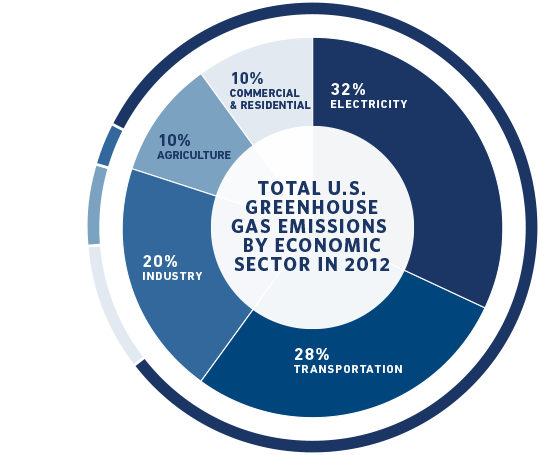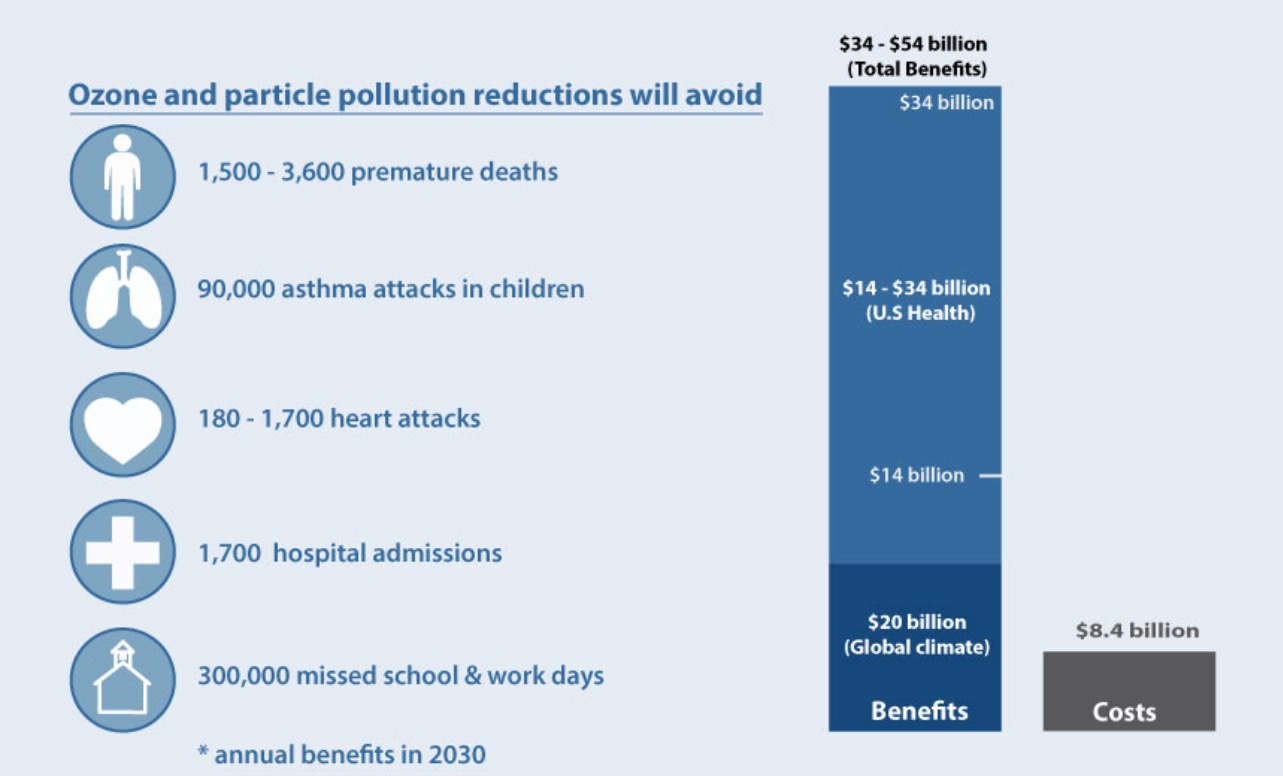Last month, scientists at a UN conference delivered a sobering warning: To prevent catastrophic warming of the planet, we must reduce all carbon emissions to zero by the end of the 21st century. Today, the Obama administration announced its plan to get there.
This afternoon Obama detailed a new clean energy plan that calls on the US to cut carbon emissions from power plants by a third by 2030. “There is a such thing as being too late when it comes to climate change,” President Obama said in today’s address, which he said was two years in the making. “The science says we have to do more.”
Acknowledging Science, Finally
The announcement of the Clean Power Plan is significant because it puts the the country’s focus on moving towards renewable energy. But it’s also notable because Obama specifically acknowledged carbon as a pollutant. There are plenty of restrictions on certain chemicals being released into the atmosphere from power plants, but as Obama pointed out, there has been no regulation from the federal government on carbon. Until now.
In outlining his plan, Obama noted many of the disturbing climate science trends that NASA and NOAA have been studying for years. We’re setting climate records in the worst possible way. 2014 was the warmest year on record, 2015 is already on track to beat it. So far, 14 of the 15 warmest years on record have occurred since 2000.
Climate change isn’t just causing problems in the future, it’s costing the US money and loss of life in the form of extreme weather events like floods, droughts, wildfires, and major storms. And it will get worse: Even if we halted all carbon emissions today, the most conservative estimates have forecasts still have sea levels rising significantly, possibly as much as three metres by 2100.
A Simple End With Complicated Means
The goal of the plan is simple: By 2030, carbon emissions from power plants will be reduced in the US by 32 per cent.

Why go after power plants specifically? Because they’re the single largest source of carbon pollution and greenhouse gas emissions in the country. (Cars are #2, and I’ll get to that in a second.)
But it’s also because energy consumption can be reduced through consumer-side efficiency standards, which would end up reducing the amount of energy needed overall, an excellent side-effect of the rule. Targeting power plants also will help catalyse technological advances across industries and get the US thinking about where its energy is coming from, and at what cost.
The State-By-State Challenge
The brilliance — or the downfall — of this plan is that it leaves concrete action up to the states. Each state will be able to put together its own plan for cutting emissions which will be approved by the federal government in September of 2016.
This is good because it acknowledges that not every state is starting from the same place — some states already do have quite stringent emissions standards — and also that each state has a different technological path to cut emissions — sunny states will lean towards solar investments, for example. The White House has put together a series of fact sheets for each state with detailed information about the advantages each state brings to the table.
But this is also where it gets tricky. Flexibility is important, but the concern is that by leaving it up to the states, some of the action will get bogged down in politicised debates about how best to achieve the goal. However, it’s definitely possible: Here’s a detailed roadmap showing how all 50 states could do it.

This proposal to switch all energy in the US to renewable sources by 2050 is by Mark Z. Jacobson, a civil and environmental engineer who heads up Stanford’s Atmosphere and Energy Program
Obama was also smart to frame the plan not as a climate change solution — which always makes people’s eyes glaze over and/or fight about the facts — but as a solution to other problems the country is facing. Switching to renewable energy will aid national security, fix the economy, and most importantly, improve public health. It will save the typical American consumer money — up to $US85/year, says the administration. For those who are worried how the plan will affect the traditional energy industry, Obama claims that a growing renewable energy industry will create even more jobs.
It’s Not Just About the Economy, Though
Even stronger is the social case for clean energy. Obama’s team has been working closely with the Environmental Protection Agency to tie the plan directly to healthcare issues, demonstrating how it will prevent premature deaths from exposure to coal plants and protect children from developing childhood asthma. In a statement that garnered some of the loudest applause in the entire announcement, Obama reiterated something well-known about “dirty energy” (and he did say “dirty energy” at least once): It has been proven to hurt the US’s low-income and minority populations the most.

The EPA is touting the health benefits of additional pollution reduction, via EPA
And that’s another important thing to remember. Obama has proposed a few other pieces of his climate legislation aimed at cutting all greenhouse gas emissions by 26-28 per cent by 2025. These would specifically impact everyday life for many Americans, like new vehicle emissions standards, a solar training program, and way to help the coal industry make the transition to renewable energy. With the EPA finalising today’s rule, one part of the plan is moving forward. But it obviously needs more comprehensive support.
In his statement today, Obama said that China was introducing stricter emissions regulations because of the rules that the US was putting in place. Whether to not that proves to be true, it does point to the fact that this is a global effort where the US has a lot of influence. In December, leaders will convene at the COP 21 conference to continue international climate talks. For the first time, the US will have a chance to be a leader in this conversation.
Picture: AP Photo/Carolyn Kaster, File
